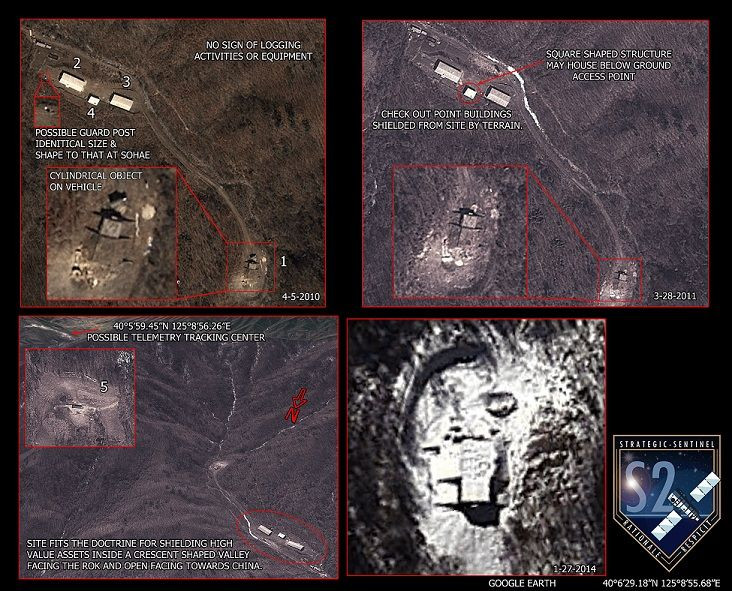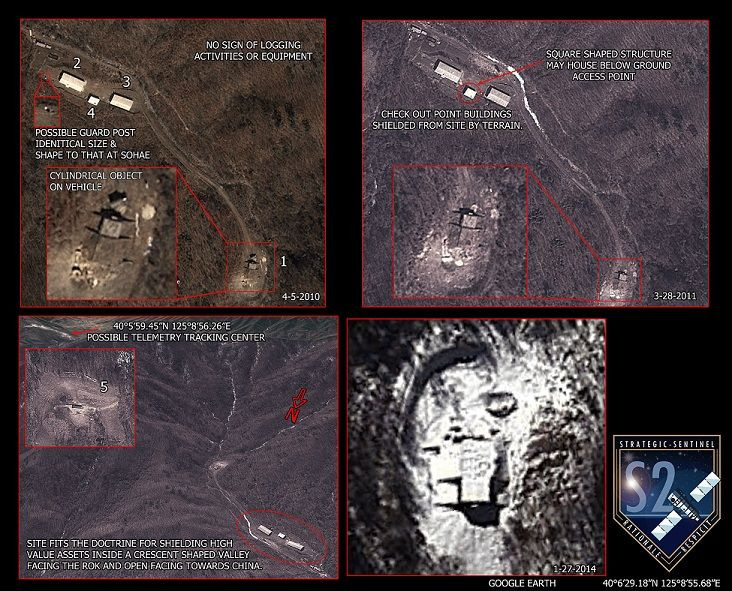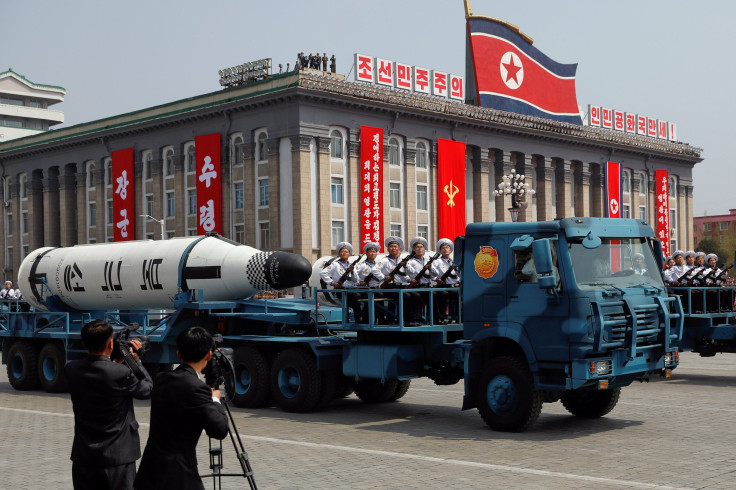Is North Korea Preparing For War? New Artificial Islands Could Be For Nuclear Missile Launch

Mysterious new infrastructure on North Korea’s artificial islands in the Yellow Sea might be part of the country's expanding military capacity and could possibly be used to launch nuclear missiles. At least five military facilities were in the process of being built on islands near Sohae, about 70 miles northwest of the capital, Pyongyang, according to satellite images.
While no one can say definitively what the infrastructure on the island will be used for, all signs point to military purposes. Multiple missile tests have taken place on Sohae in the past and the new structures make it seem likely more are being planned for the future. Many of the islands’ new roads contain wide turns, large enough to be used for the enormous missile-carrying trucks known as Transporter Erector Launchers.
Analysts said some of the patches of light visible on the ground could be the result of heat resistant cement designed to withstand the extreme temperatures of missile launches. And it seems there’s room for the North Korean leader to watch the operations take place.
Read: Tensions Between North Korea And United States Reach Boiling Point
“They have observation areas, for someone like Kim Jong Un to observe a missile launch,” Ryan Barenklau, chief executive of Strategic Sentinel, the intelligence firm that analyzed the images, wrote in the Diplomat. “Every time we see VIP buildings, that tells us there’s most likely a military application because Kim Jong Un likes to view the operations of whatever they’re building.”
Tensions between North Korea and the United States have increased in recent days over heightened concerns of North Korea buildings its military capabilities. North Korea recently bragged of an impending “big event,” leading U.S. officials to warn they would launch a pre-emptive strike if they became aware of any such action. North Korea, in turn, cautioned it would “hit the U.S. first” if the U.S. planned to pre-empt a missile strike.

In a visit to South Korea in April, Vice President Mike Pence warned that the U.S. policy of “strategic patience” toward North Korea was over. The U.S. subsequently began installing a military defense system in South Korea, designed to destroy short and medium-range missiles launched by the North.
“By relentlessly bringing in a number of strategic nuclear assets to the Korean peninsula, the U.S. is gravely threatening the peace and safety and driving the situation to the brink of a nuclear war,” North Korea said in a statement in April, according to state news agency KCNA. “This has created a dangerous situation in which thermo-nuclear war may break out at any moment.”
Read: United States Installs Missile Defense System In South Korea
Experts cautioned that despite evidence the islands will be used in some sort of military capacity, their true purpose could be entirely different. Damen Cook, lead research associate at Stategic Sentinel, said it would be impossible to jump to any decisive conclusive, but noted that North Korea has been “outstandingly good at hiding their true intentions and confusing analysts.”
“North Korea is a very difficult country to analyze, since most information must be deduced from satellite images, what little they publish officially and from defectors,” Cook wrote Monday in the Diplomat. “It is entirely possible that these islands are part of a land reclamation project for agricultural or other civilian purposes which has nothing to do with military applications and never will.”

© Copyright IBTimes 2024. All rights reserved.






















